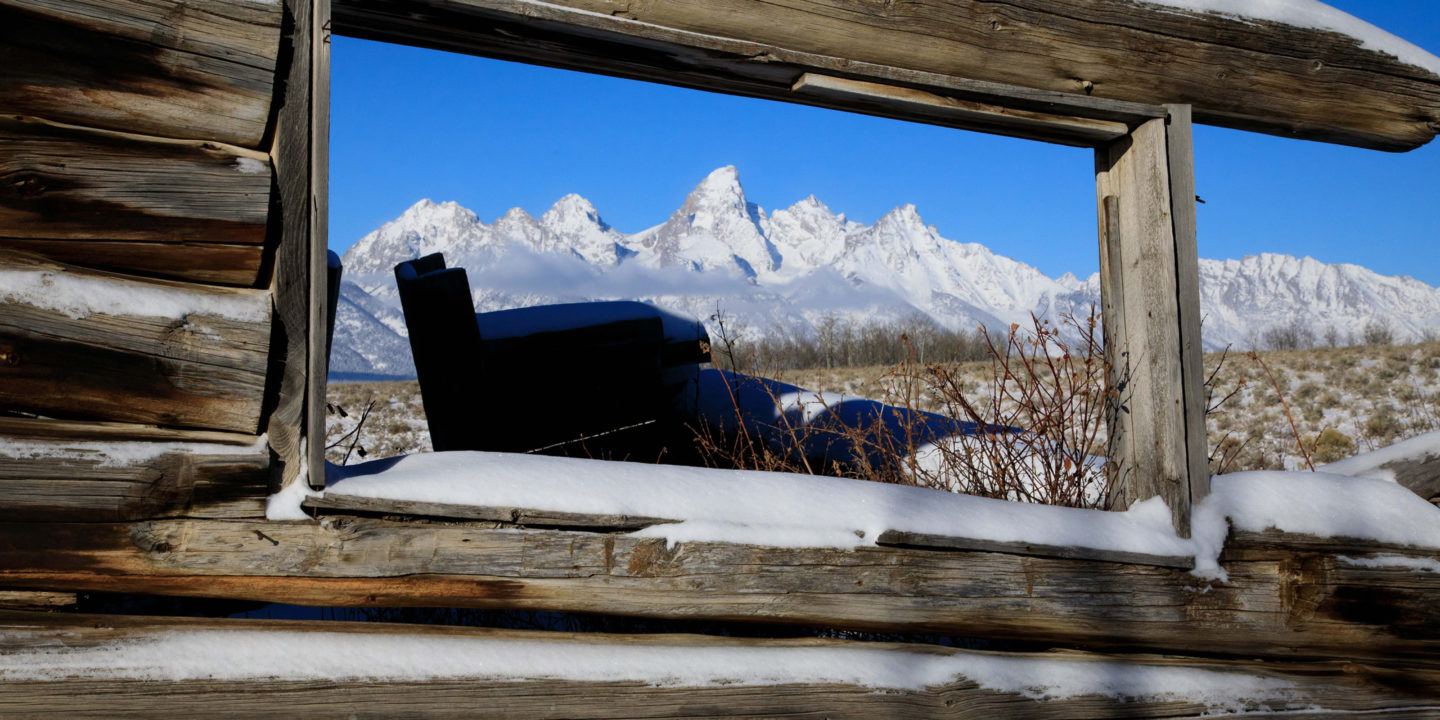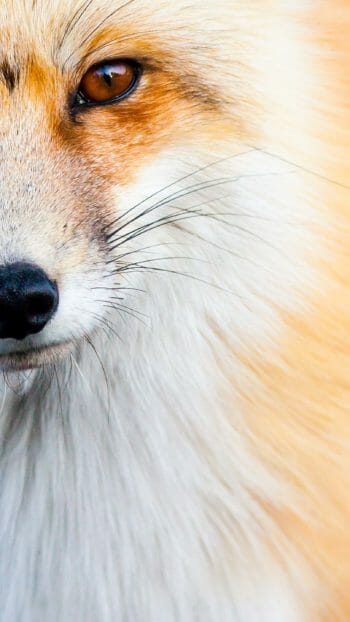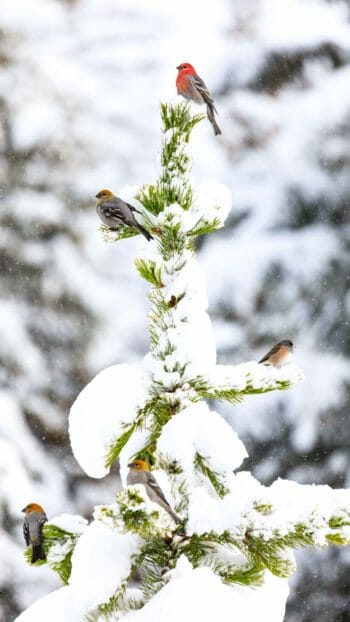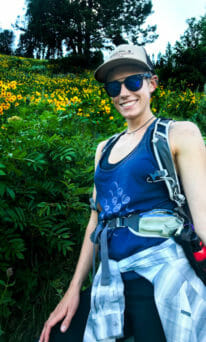Summer is undoubtedly the busiest time of year for Jackson Hole, especially with the draw of Yellowstone and Grand Teton National Parks bringing millions of visitors into the area. As winter nears, the crowds typically shrink, and the once autumnal landscape turns brown and somewhat barren looking. This time frame is affectionately known as the “shoulder season”, when those who work diligently in the tourism industry get a moment to pause and catch their breath. Then November ends and a new cycle begins – the winter season.
Skiers from all around the world will come to the renowned Jackson Hole Mountain Ski Resort (JHMR). Upwards of 700,000 people will hit the steep slopes of this resort throughout winter, tempted by extreme terrain and deep powder. The smaller (but just as steep) Snow King Ski Resort directly overlooks Jackson, and not only offers skiing opportunities but a snow tubing area at the base. Some skiers venture the 45 miles northeast of Jackson to the west side of the Teton Mountain Range, as there lies the Grand Targhee Ski Resort. Overall the slopes are not as steep, but the powder is fabled to be even deeper than at the mountain resort on this side of the Grand Teton Range.
Winter Wildlife in Jackson Hole
Those who do not ski might not think of visiting Jackson during its chilliest time of year, but it actually has a lot to offer for both skiers and non-skiers alike. Plenty of wildlife throughout Jackson Hole remains active during this season, such as the bighorn sheep parting from their mountainous summer habitats to move into the National Elk Refuge. This provides some of the best chances to see this animal in close proximity, where they boldly roam alongside or in the roadway.
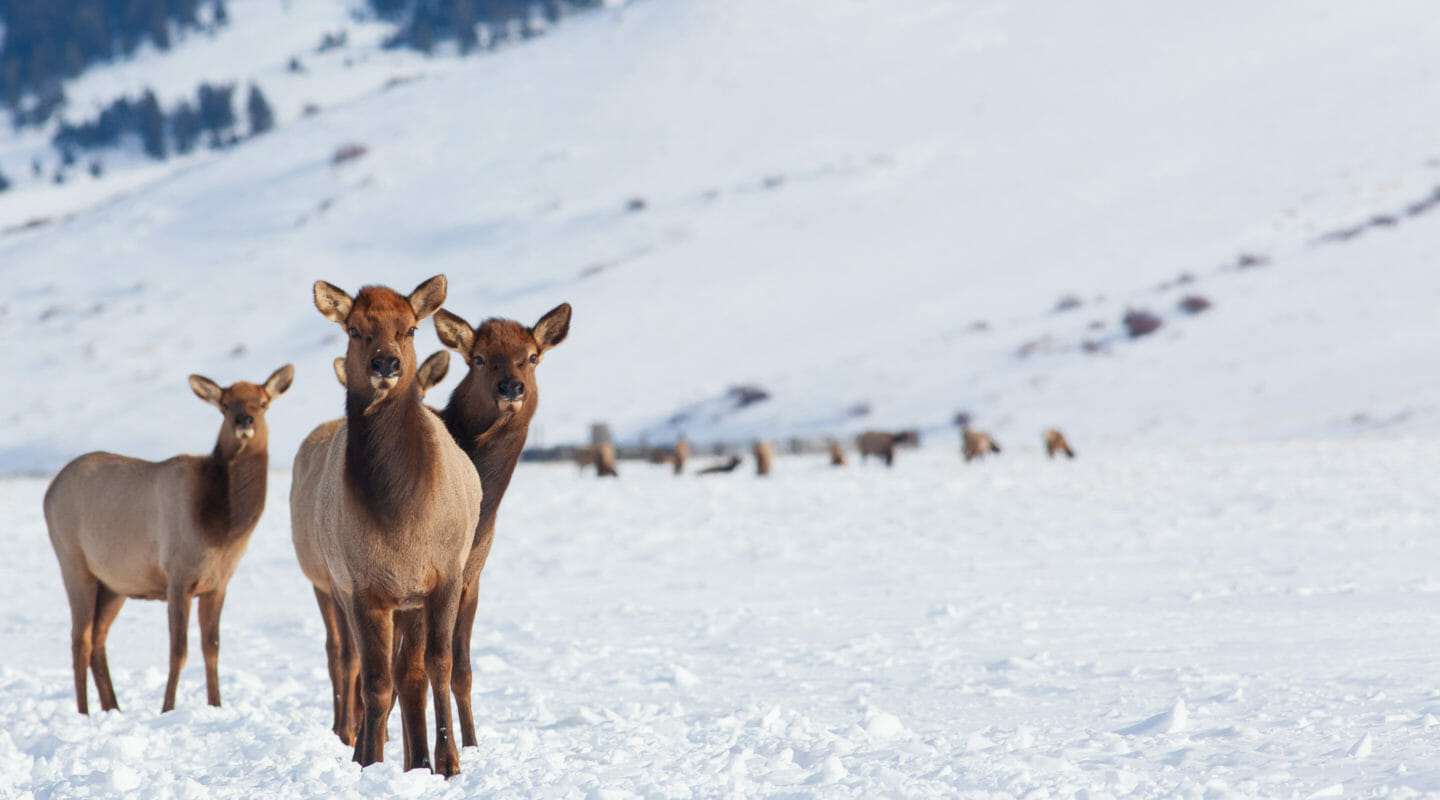
Moose and Elk
By December, grizzly bears might be spotted trudging through the snowy Jackson Hole Valley, rummaging for the last scraps of food before heading for their hibernation dens. Moose will be leaving their usual densely vegetated summer homes along riversides for more open terrain to seek out winter foraging, meaning they are much easier to spot during this time of year. The bull moose typically begin shedding their antlers in December, so if you want to witness some impressive palmated antlers – get here early in the winter season!
By mid-December sleigh rides will begin on the National Elk Refuge. If you’ve ever wanted a close up view of hundreds of elk, this is the opportunity for you! It is a wonderfully immersive experience that you can arrange on your own, or experience it included in the full day Best of Jackson Hole Safari tour. Prior to 1912, due to human development related habitat loss and therefore a lack of food for winter, thousands of elk were starving to death in the cold. This inspired not only the 25,000 acre refuge, but a supplemental feeding program. Initially local ranchers brought hay onto the refuge by sleigh, and began taking eager onlookers along with them until the first official public sleigh rides started in 1965. Nowadays, the Fish and Wildlife Agency manages the refuge and the feeding program, supplementing the elks’ winter diet with alfalfa pellets, and the sleigh rides are conducted by the local Double H Bar Ranch.
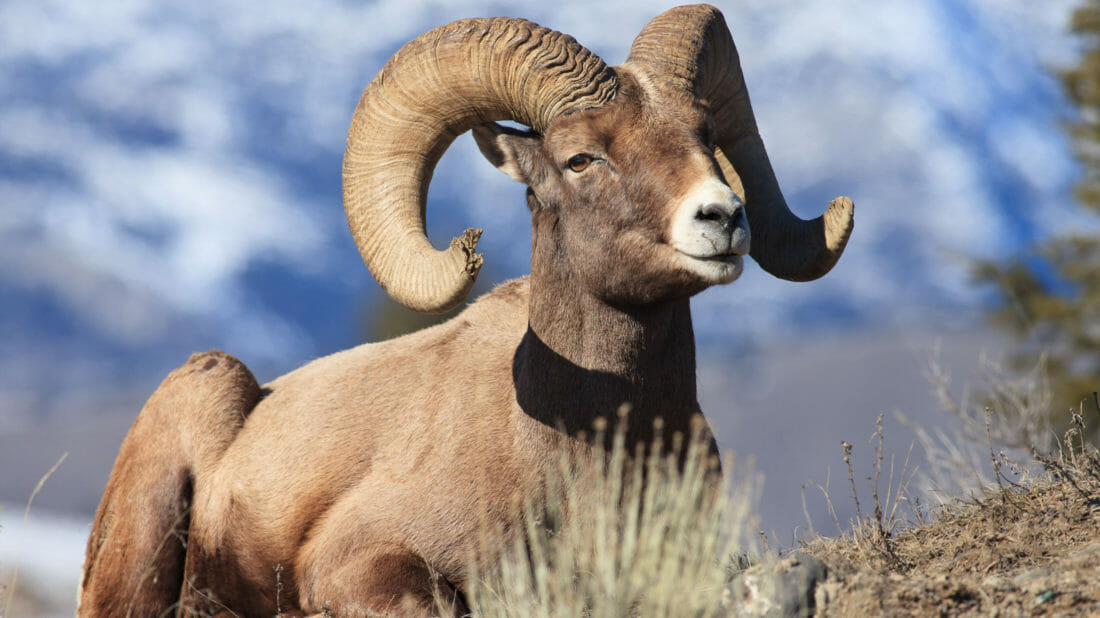
Bighorn Sheep
January not only marks the start of a new year, but the truly frigid chill of winter as well. While well below freezing temperatures may not seem inviting, some of the best winter sunrises can be seen on those brutally cold, clear mornings. Increasing quantities of snow and cooler days will also drive more wildlife south, in Jackson Hole, into lower elevations. Upwards of 7,000 elk might end up in the National Elk Refuge by the end of this month.
Bison will be on the move too, and can often be seen navigating the roadways of Grand Teton National Park, where there is a nicely plowed path instead of fighting their way through multiple feet of snow. Many bison will settle around the north end of the National Elk Refuge. With so many prey animals on the refuge (elk, bighorn sheep, bison, deer) this attracts a multitude of predators, wolves being the highlight of those carnivorous species. Wolves prey on a variety of animals, but in winter they survive primarily on elk. Individuals and packs might be seen on the National Elk Refuge on a near daily basis, where they normally make a kill every 2-3 days. The carcasses left behind will become nourishment for coyotes, foxes, eagles, ravens and magpies.
The frostiness of January also hosts the heat of the breeding season for bighorn sheep. This is when the iconic head butting behavior can be witnessed. 200-300 pound rams will charge each other at speeds reaching 40mph while competing for females, enough force to give most living organisms with a brain severe head trauma. Protecting the male bighorn sheep from such injury is an ample amount of padding in his horns and a particularly thick skull.
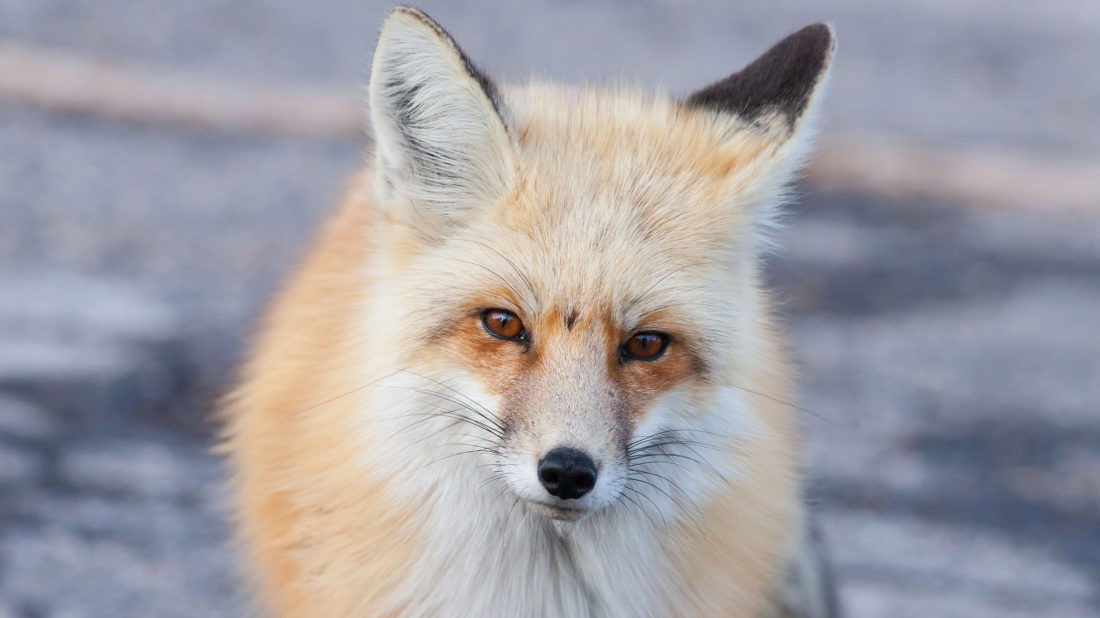
Wolves and Foxes
With February customarily comes blizzards where multiple feet of snow could fall in a 12 hour period. This doesn’t stop the peak of the breeding season for wolves and foxes. While skiers will be chasing fresh stores of powder, these canine species will be busy chasing each other around. Wolves will mate for life. In a pack, the alphas will typically separate from their group during this time, whilst newly mature members will leave the pack in search of a mate and for territories of their own. Foxes are more promiscuous. A male will mate with multiple females, usually staying with each individual female for at least two-three weeks while they court, hunt and search for a birthing den.
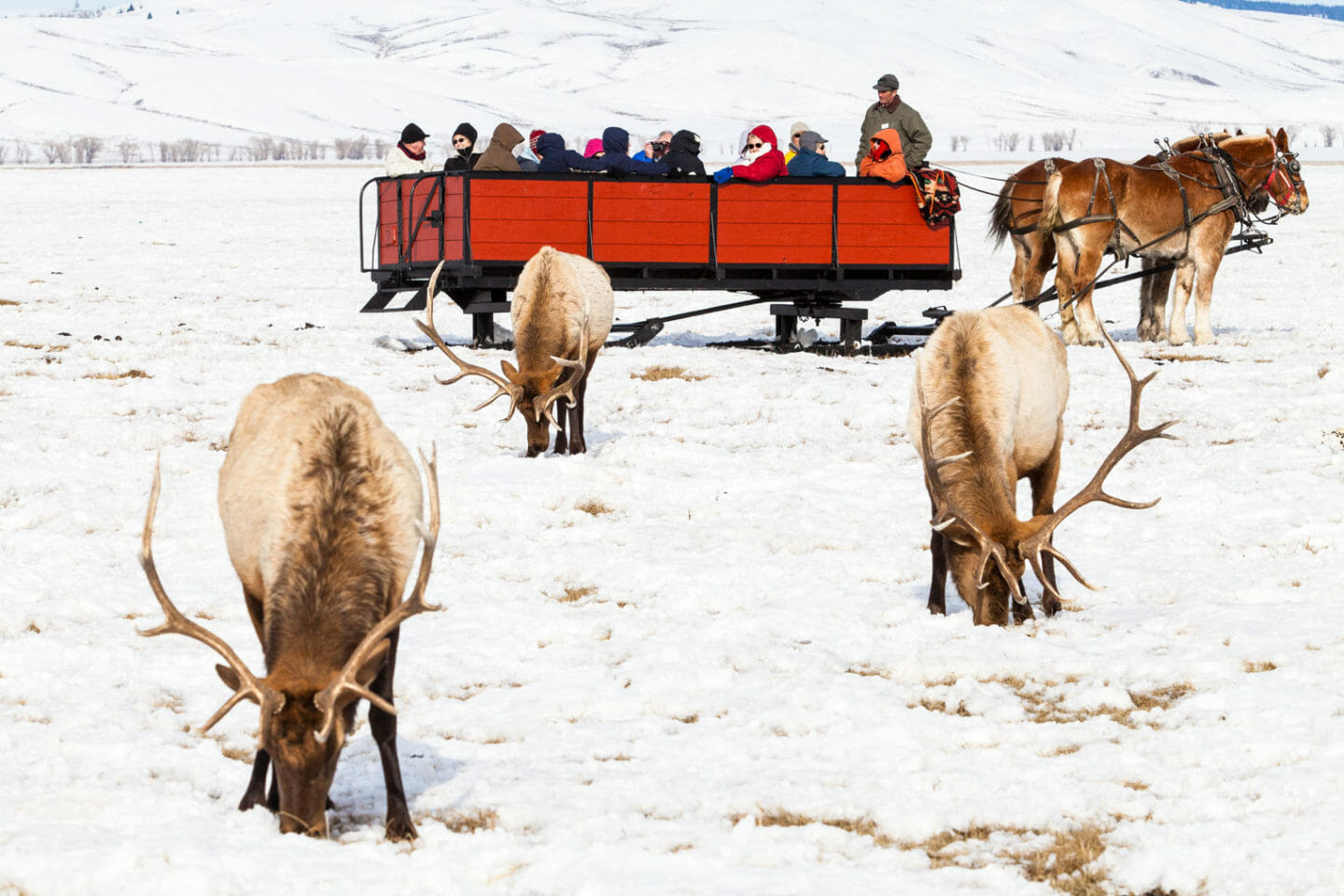
The chill of winter begins to ease with the arrival of March. As skiing conditions become less desirable, the winter rush winds down too. If you’re interested in a quieter, and slightly warmer winter experience in Jackson Hole this is a great time to visit. Teton Village will host a variety of music related events throughout March, including the grand finale to winter – the 3 day Rendezvous Festival near the end of the month.
Jackson Hole transforms into a winter wonderland every year, with snows usually arriving in November and continuing in the valley through April. Wildlife enjoys wintering in Jackson Hole too, with many species migrating to the valley floor for the duration of the season. A guided wildlife safari tour offers excellent opportunities to spot a variety of wildlife in their winter habitat.
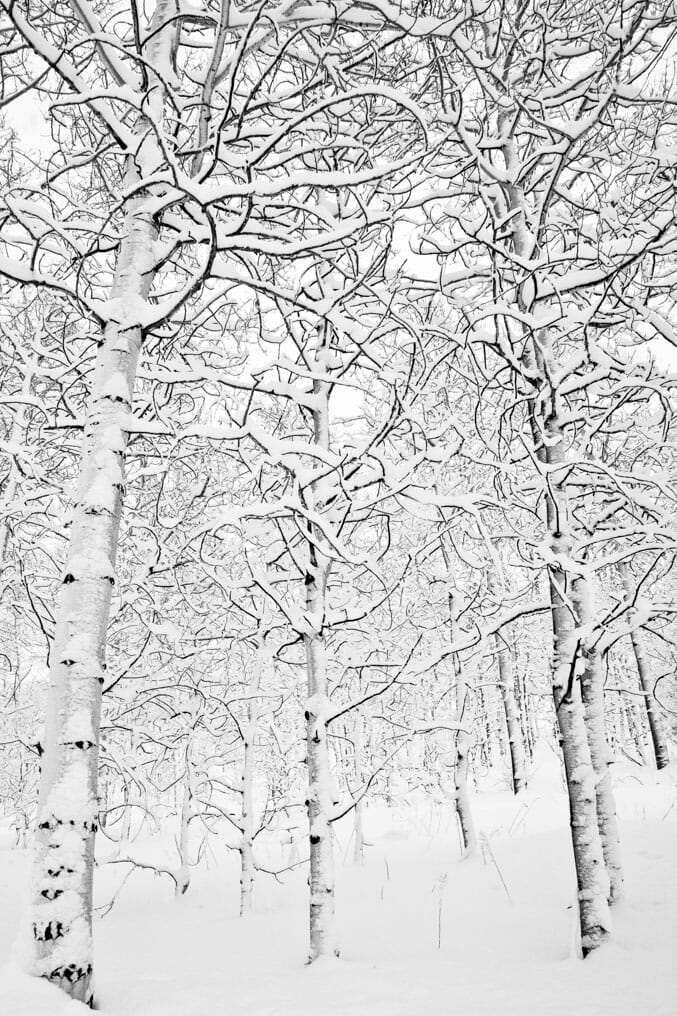
Skiing alternative activities do not stop with Jackson Hole Wildlife Safari tours. If you’ve seen all the wonderful wildlife you could possibly want, consider these other amazing winter adventures. Teton Mountain Bike Tours offers both snowbiking (fat tire biking) tours and rentals for Grand Teton National Park and the National Elk Refuge. Snowshoeing is another way to explore more of the area, multiple outdoor outfitting stores offer snowshoe rentals and there are droves of trails to choose from. You can also enjoy a sleigh ride along the Snake River with hot cocoa and a crackling riverside fire. There are snowmobile rentals and tours available too, with opportunities to venture into the Bridger-Teton National Forest or even into Yellowstone National Park! Another incredible option is a dog sledding tour, with trips available on nearby trails to town, and some trekking even deeper into the wilderness to offer a more remote winter experience.
Don’t let the cold stop you from exploring Jackson Hole in winter! There is something for everyone in the valley during that time of year, whether that be flying down adrenaline bolstering ski slopes or enjoying a relaxing wildlife tour or sleigh ride.

